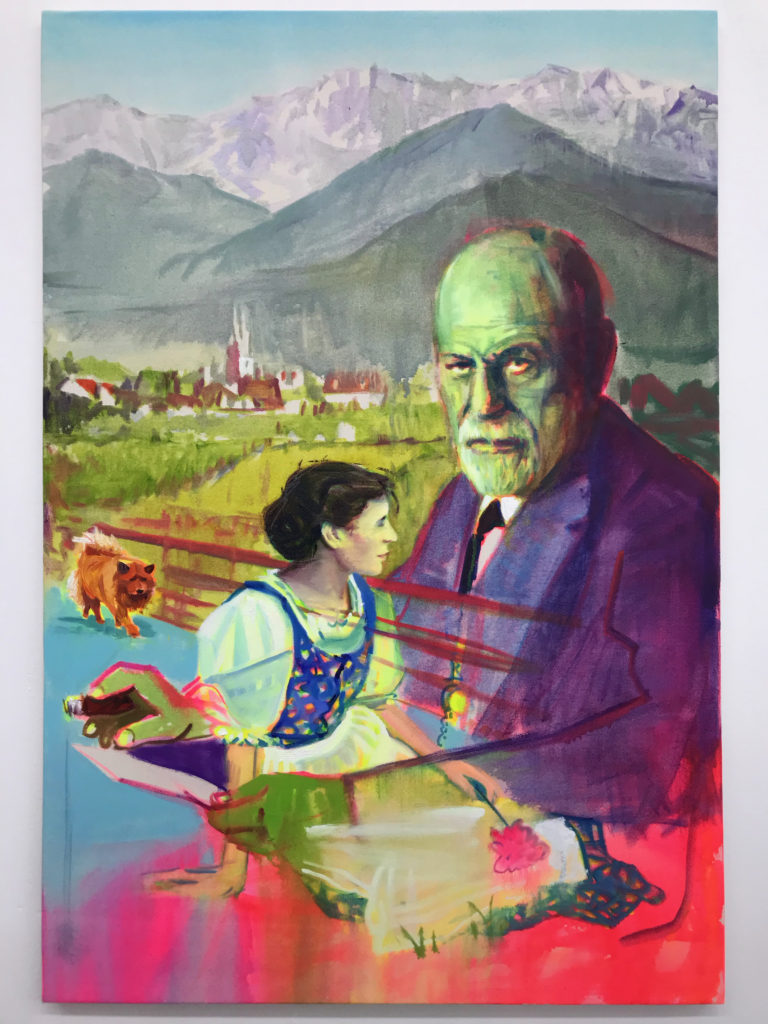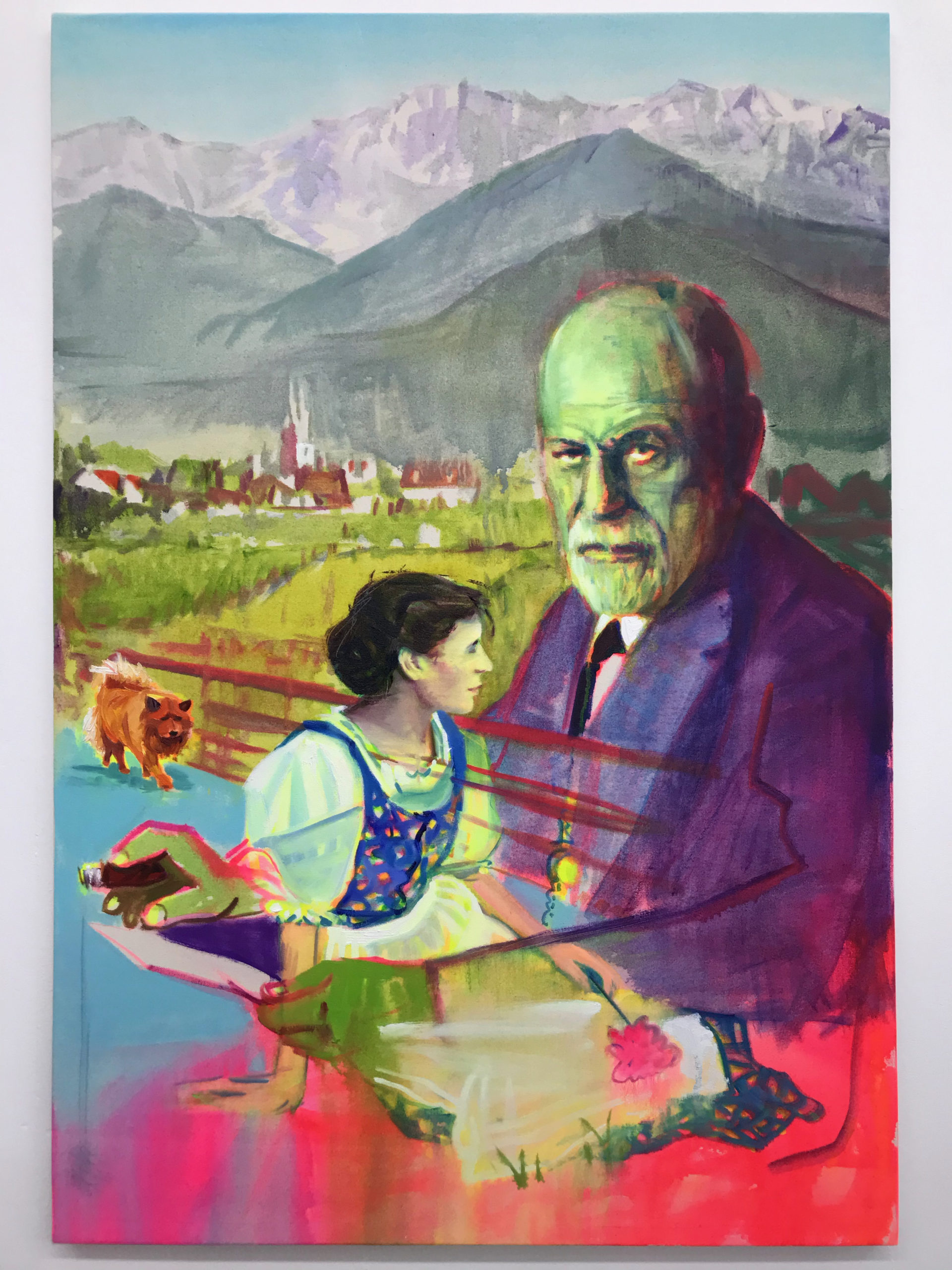
Group show
Marie-Laure Bernadac and Bernard Marcadé, art historians,
in association with Gérard Wajcman and Paz Corona, psychoanalysts.
The ideas of Jacques Lacan are, alongside the work of Roland Barthes, Michel Foucault, Jacques Derrida and Gilles Deleuze, essential for understanding our modernity. While homages and exhibitions have already been dedicated to these intellectual figures, the thought of Lacan has not been dealt with in museums to date, even though he was strongly attached to works of art.
Lacan was closely involved with 20th-century art and artists, and in his teaching never ceased to draw on the art of all times. His discourse on art has been as fresh as it has been unusual, holding back, intriguing and provoking many contemporary artists. He has interpreted artworks not just as powers that give us something to see, but as dazzling objects that look back at the viewer. In devoting an exhibition to Jacques Lacan, we wanted to surround his fascinating figure with a multitude of such gazes.
All this is far removed from a psychoanalytical interpretation of artists. The psychoanalyst is quite the opposite of a master: he or she is a student of art, docile to art’s original truths, and aiming to decipher the previously unsuspected knowledge it contains. That is why this exhibition is not only a homage to psychoanalysis: it also celebrates what remains behind, after all elucidation, of the mystery of art. Lacan, at the end of his life, saw things no differently.
Lacan opened up an innovative space that is at the heart of our modernity and of our contemporary experience. Today we are debating issues of sex, love, identity, gender, power, belief or disbelief, all questions for which the psychoanalyst provided precious reference points.
The visit should be seen and experienced as a journey through specifically Lacanian notions, beginning with the mirror stage, which has fascinated so many artists and film-makers. Next, the exhibition evokes the concept of Lalangue, a word invented by Lacan to describe a form and function of language that is more closely linked to what the psychoanalyst called the Real, and which echoes the work of artists who have played with words, double meanings, babbling and even the language of birds, while not forgetting its links with poetry. The Name of the Father section will be a chance to rethink the notion of patriarchy. Next, is a section on object a, Lacan’s invention to describe the object that is the cause of desire as a lack, remainder and fall. It will be deployed in a range of variations: fall, phallus, breast, body fragments, shit, voice, nothing, gaze and lastly hole.
The chapter devoted to Gustave Courbet’s L’Origine du monde will be a crucial part of the visit. Lacan and his wife Sylvia bought the painting in 1954. They kept it hidden behind a panel designed by André Masson. It has given rise to many contemporary interprétations.
The Woman does not exist section is dedicated to Lacan’s famous phrase, underlining the fact that there is no essence in woman, and shows the works of artists questioning misogynous representations. Femininity is often multifaceted, and the masquerade section will pay homage to Joan Riviere’s concept, which was taken up by Lacan. The masquerade is featured in the work of many modern and contemporary artists making use of transvestism, confirming Lacan’s position that anatomy is not destiny, meaning that gender does not necessarily correspond to the sex assigned at birth.
According to Lacan’s famous phrase, There are no sexual relations. This is the name of a section organised around a replica of Duchamp’s The Large Glass, where the bride’s enjoyment of pleasure in the upper realm occurs without any physical contact with the bachelors in the lower realm. For Lacan, love is “what replaces the absence of sexual relations” (Again, Le Séminaire, Livre XX, text compiled by Jacques-Alain Miller, Paris, Seuil, 1975), but is also what opens the way to jouissance or enjoyment – “Only love causes jouissance to stoop to desire” (Anxiety, Le Séminaire, Livre X, text compiled by Jacques-Alain Miller, Paris, Seuil, 2004). A section will explore “jouissance”, female pleasure, first of all, epitomised in the mystical transports expressed in Bernini’s Ecstasy of Saint Teresa and its contemporary incarnations in the works of Anselm Kiefer, ORLAN, and even the performances of the Sisters of Perpetual Indulgence.
The last years of the psychoanalyst’s teaching were largely devoted to topology, to Borromean knots, Möbius strips and Klein bottles. The last section of the exhibition reflects both Lacan’s interest in the knots and braiding produced by François Rouan, an artist he met at the Villa Médicis, and for whom he wrote a text, and the influence of Lacan’s topological preoccupations on contemporary artists. The visit concludes with a cabinet of curiosities, entitled Curiosa, showing how the figure of Jacques Lacan is still an endless source of inspiration for the artists of our time.
